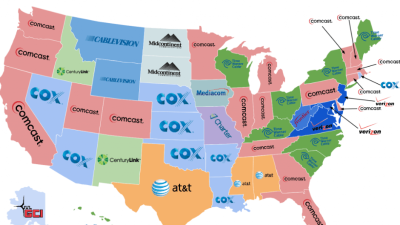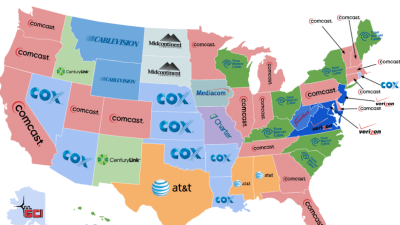
The United States boasts one of the most mature telecommunications markets in the world, with high broadband penetration.
A diverse network of carriers offers a wide range of broadband services for businesses and individuals.
- Comcast Xfinity
Comcast Xfinity is one of the largest broadband providers in the United States, with extensive coverage, particularly in major cities and suburban areas. It primarily offers high-speed wired broadband service, with speeds ranging from 50 Mbps to 1 Gbps. Xfinity also bundles TV, phone, and streaming services, providing a one-stop solution for home users.
- Pros: High, stable speeds, and wide coverage.
- Cons: Prices are high in some areas, and some users report that customer service needs improvement.
- AT&T
AT&T is the second-largest broadband provider in the United States, offering DSL (Digital Subscriber Line), fiber, and wireless broadband services. AT&T's fiber service is known for its ultra-high speeds (up to 5 Gbps), making it suitable for consumers and businesses requiring high-speed internet connectivity.
- Pros: Fiber service offers fast speeds and extensive coverage, particularly in the South and Midwest.
- Cons: Fiber coverage is not yet fully universal, with some remote areas still using slower DSL service.
- Spectrum (Charter Communications)

Spectrum is another leading wired broadband provider in the United States, with network coverage in over 40 states. Spectrum is popular for its unlimited data plans, with speeds ranging from 200 Mbps to 1 Gbps, making it suitable for bandwidth-intensive users like streaming and gaming.
- Pros: No data cap, ideal for home entertainment.
- Cons: Prices fluctuate significantly, with basic plans being more expensive in some areas.
- Verizon Fios
Verizon Fios specializes in fiber-optic broadband service, covering most cities in the Northeast. Fios offers symmetrical upload and download speeds, a crucial feature in today's increasingly popular world of video conferencing and remote work.
- Pros: Consistent upload and download speeds, resulting in high customer satisfaction.
- Cons: Limited coverage, limited to select cities and regions.
Businesses and individual users should consider their needs, coverage availability, and price when choosing a broadband service to achieve the best network experience.
